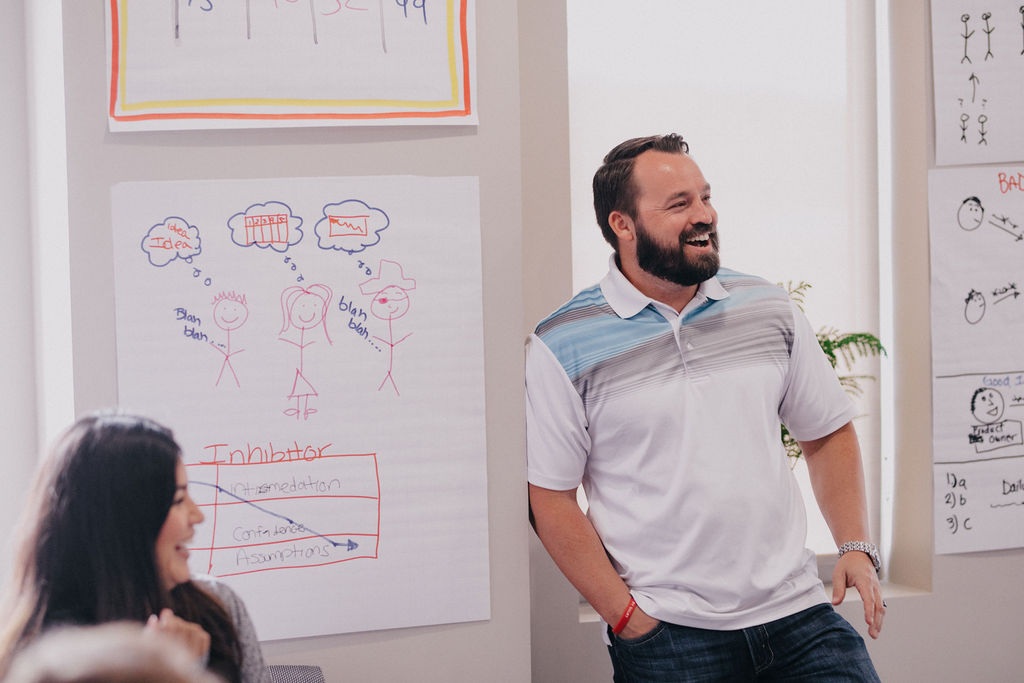This course is a hybrid of self-paced video learning and live, interactive sessions using Zoom breakout rooms and other collaboration tools. Live sessions are taught in three hour blocks over two days with a 90-minute break in between sessions. Successful completion of the videos, live session and exam will grant you your certification and a two-year membership to the Scrum Alliance.
Self-Paced Videos
You’ll receive more than three hours of video content with short videos (7-12 min) to watch at your convenience. These videos are self-paced, but must be completed to obtain your certification. The main topics covered are:
- Agile and Scrum Mindset
- Scrum Roles
- Visioning and Working with Customers
- Product Backlog Concepts
- Prioritization Techniques for an Agile Roadmap
- Long-term Planning
Typical Live Session Structure
Our live session experience revolves around you and the freedom to spend less time lecturing and more time doing. We find the best way to learn Scrum is by doing Scrum. Our workshops are conducted using Scrum itself so you can see how the instructor (Product Owner) prioritizes our topics, moves them along the Scrum Board, and produces release burn-down charts that are reviewed at the end of every Sprint. This also helps dispel the myth that Scrum is only suited for Software projects.In addition, you will work with carefully structured, hands-on exercises within small teams (Development Team) to deepen your knowledge and broaden techniques that you will feel comfortable with enacting as soon as you get back with your teams.
- Quarterly Activities of a Product Owner (Significant Objectives)
- Sprint Activities of a Product Owner (Supporting the Scrum Team)
- Affects of Scrum on the Product Owner Role
- Visioning Significant Objectives for the Development Team
- User Role Modeling, Documenting Roles, and Personas
- Assumptions and Hypothesis Testing
- Epics, Themes, and Stories
- Story Mapping and Road-mapping
- User Stories, Job Stories, and Technical Stories (Acceptance Criteria)
- Prioritization Techniques (Buy-a-Feature and Relative Weighting)
- Using Metrics to Derive Timelines (Fixed-date and Fixed-scope)
Who Should Attend?
- Product managers, project managers, business analysts and other business professionals looking to become a product owner.
- Leaders who need techniques to help prioritize an infinite amount of work against a finite timeline or capacity.
- Businesses who want to learn how to engage Scrum Teams for work.
